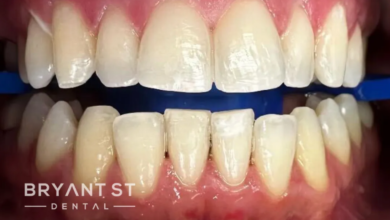What Are the Signs and Treatments for Stomach Ulcers?

Hello! Today, we’re diving into a common but often misunderstood digestive condition—stomach ulcers. Known medically as peptic ulcers, these sores develop on the inner lining of your stomach and upper part of your small intestine. Stomach ulcers can cause discomfort, disrupt daily life, and if left untreated, lead to severe complications. Ranitidine 150 mg is best treatment of Stomach ulcers. Here, we’ll explore the signs, causes, and treatment options available, along with tips to manage and prevent them.
Understanding Stomach Ulcers
Stomach ulcers are essentially open sores that form in the lining of your stomach or the first part of the small intestine (duodenum). They’re part of a larger category called peptic ulcer disease (PUD). Buy Ranitidine from Online Pharmacy. These ulcers occur when the stomach lining becomes damaged, allowing the stomach’s natural digestive acids to erode the tissue.
Causes of Stomach Ulcers
The two main causes of stomach ulcers are:
- Helicobacter pylori (H. pylori) infection: This type of bacteria can weaken the stomach’s protective mucus layer, allowing acid to damage the lining.
- Nonsteroidal anti-inflammatory drugs (NSAIDs): Prolonged or high-dose use of NSAIDs like ibuprofen and aspirin can irritate and weaken the stomach lining.
Common Signs and Symptoms
Stomach ulcers can produce a range of symptoms, and it’s essential to recognize these early to prevent complications. Here are the most common signs:
- Burning or Gnawing Pain: One of the most telltale symptoms is a burning or gnawing pain in the stomach area, typically between the breastbone and the navel. This pain may come and go, often occurring when your stomach is empty or in the middle of the night.
- Bloating and Fullness: Many people with stomach ulcers experience a feeling of fullness or bloating. This can be uncomfortable and may lead to a reduction in appetite.
- Nausea or Vomiting: Nausea, and sometimes vomiting, are common symptoms, especially if the ulcer has irritated the stomach lining significantly.
- Heartburn or Acid Reflux: Acidic stomach contents may move up into the esophagus, leading to a burning sensation in the chest.
- Loss of Appetite and Weight Loss: Ongoing discomfort or pain can reduce appetite, leading to unintentional weight loss.
- Dark or Tarry Stools: If the ulcer starts bleeding, it can cause dark or black stools, which may signal a more severe problem and require immediate medical attention.
Diagnosing Stomach Ulcers
If you experience any of these symptoms, it’s essential to consult a healthcare professional. Several tests can help diagnose stomach ulcers:
- Endoscopy: In this procedure, a thin tube with a camera is inserted through the mouth to visualize the stomach lining and look for ulcers.
- H. pylori Test: Since H. pylori is a common cause, testing for this bacteria through breath, stool, or blood tests is common.
- Upper Gastrointestinal Series: This involves drinking a liquid that coats the digestive tract to show up on X-rays, helping reveal ulcers.
Treatment Options for Stomach Ulcers
Stomach ulcers are treatable, and most people experience relief with a combination of medication and lifestyle adjustments. Here’s a breakdown of the typical treatment plan:
1. Medications
- Antibiotics: If H. pylori is the cause, a combination of antibiotics may be prescribed to eliminate the bacteria. Common options include amoxicillin, clarithromycin, and metronidazole.
- Proton Pump Inhibitors (PPIs): PPIs like omeprazole, esomeprazole, and pantoprazole reduce stomach acid production, allowing the ulcer to heal.
- Histamine (H2) Blockers: Medications such as ranitidine and famotidine can also decrease acid production in the stomach, helping reduce irritation and pain.
- Antacids: These can provide quick, short-term relief by neutralizing stomach acid, but they don’t heal the ulcer itself.
- Protective Medications: Some medications, like sucralfate, coat the stomach lining and protect it from stomach acid, allowing the ulcer time to heal.
2. Lifestyle and Dietary Adjustments
Certain lifestyle changes can play a significant role in reducing ulcer symptoms and aiding in their healing. Consider these adjustments:
- Limit NSAIDs: If NSAIDs caused the ulcer, avoid them or take them with food and only under a doctor’s supervision.
- Reduce Stress: Although stress doesn’t directly cause ulcers, it can worsen symptoms. Incorporate relaxation techniques like meditation, yoga, or gentle exercise.
- Avoid Smoking and Alcohol: Smoking and excessive alcohol consumption irritate the stomach lining and can delay ulcer healing. Quitting smoking and reducing alcohol can significantly improve symptoms.
- Eat Smaller, Frequent Meals: Large meals can increase stomach acid production, so opt for smaller meals spread throughout the day to reduce acid spikes.
3. Home Remedies and Supplements
Several natural remedies and supplements may support ulcer healing. However, it’s essential to consult a doctor before adding these to your treatment plan:
- Probiotics: Probiotic-rich foods like yogurt or supplements can help restore the balance of good bacteria in your gut, especially if you’re taking antibiotics for H. pylori.
- Honey: Some studies suggest that honey has antibacterial properties and may help protect the stomach lining.
- Licorice Root: Known to have properties that protect the stomach lining, deglycyrrhizinated licorice (DGL) may be a safer option for ulcer relief.
- Cabbage Juice: This old remedy is rich in vitamin C, which some studies show may help heal stomach ulcers, particularly those caused by H. pylori.
Preventing Stomach Ulcers
Prevention is always better than cure. Here are some ways to lower your risk of developing stomach ulcers:
- Limit NSAID Use: Whenever possible, try to use alternatives to NSAIDs, like acetaminophen, which doesn’t irritate the stomach lining.
- Practice Good Hygiene: Since H. pylori is contagious and spread through contaminated food or water, wash your hands frequently, especially before eating.
- Avoid Smoking and Excessive Alcohol: Both smoking and alcohol increase your risk of ulcers by weakening the stomach lining.
- Eat a Balanced Diet: A diet high in fiber, fruits, and vegetables is beneficial for stomach health and overall well-being.
- Manage Stress: Incorporating regular physical activity, meditation, and mindfulness can help reduce stress, which, while not a direct cause, can worsen ulcer symptoms.
When to See a Doctor
If you experience any symptoms of a stomach ulcer—especially if you notice severe abdominal pain, dark stools, or unexplained weight loss—it’s essential to seek medical attention. These can be signs of a bleeding ulcer, which requires prompt treatment.
Final Thoughts
Stomach ulcers are a common health issue but can be managed effectively with the right treatment plan and lifestyle adjustments. Whether the cause is bacterial or related to medication, early intervention can help relieve symptoms and prevent complications.
By recognizing the symptoms and making adjustments like avoiding NSAIDs, limiting alcohol, and managing stress, you can reduce your risk and promote healing. Remember, regular check-ups and open communication with your healthcare provider are crucial for maintaining digestive health.
Stomach ulcers may be uncomfortable, but with proper care, they don’t have to interfere with your quality of life.








